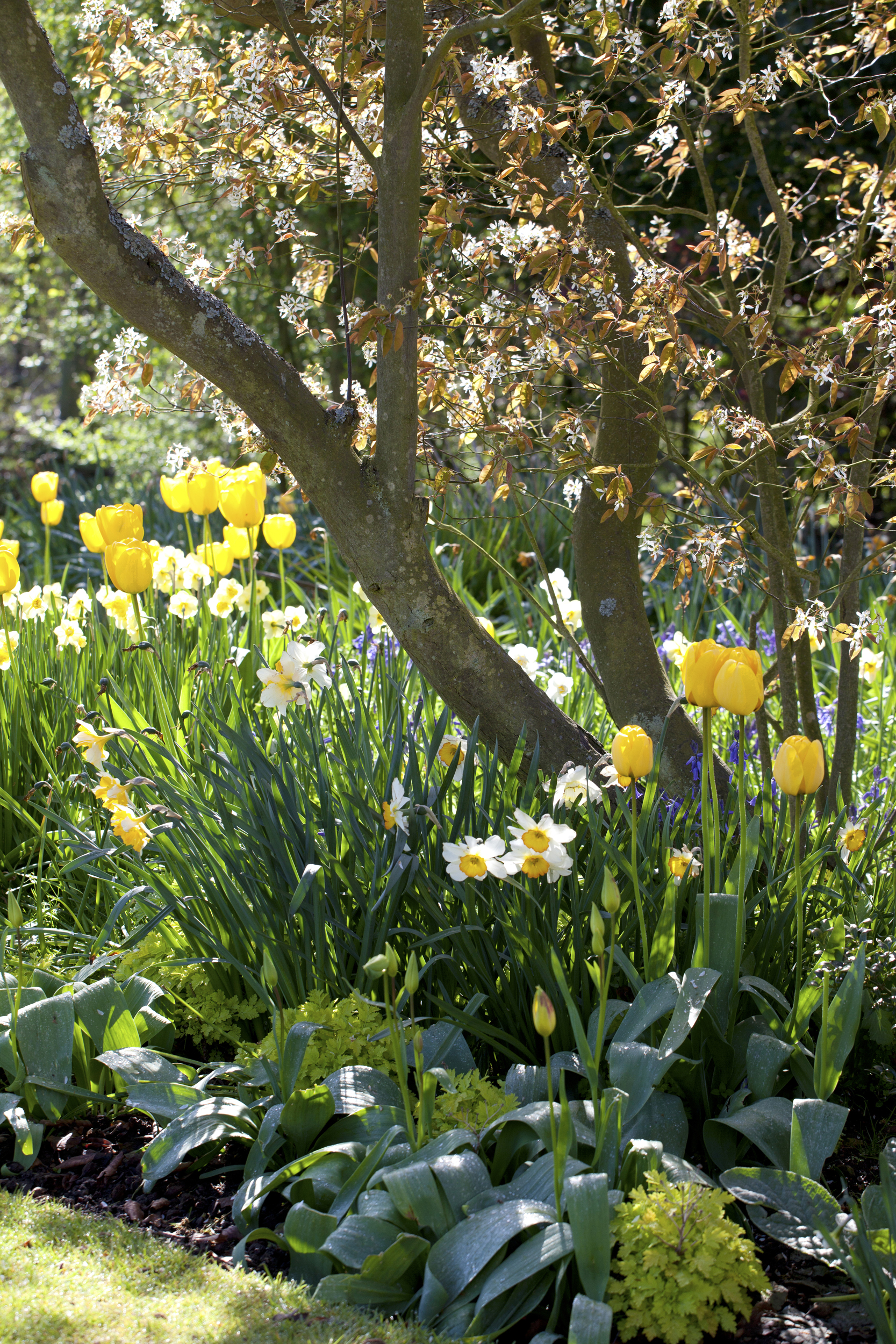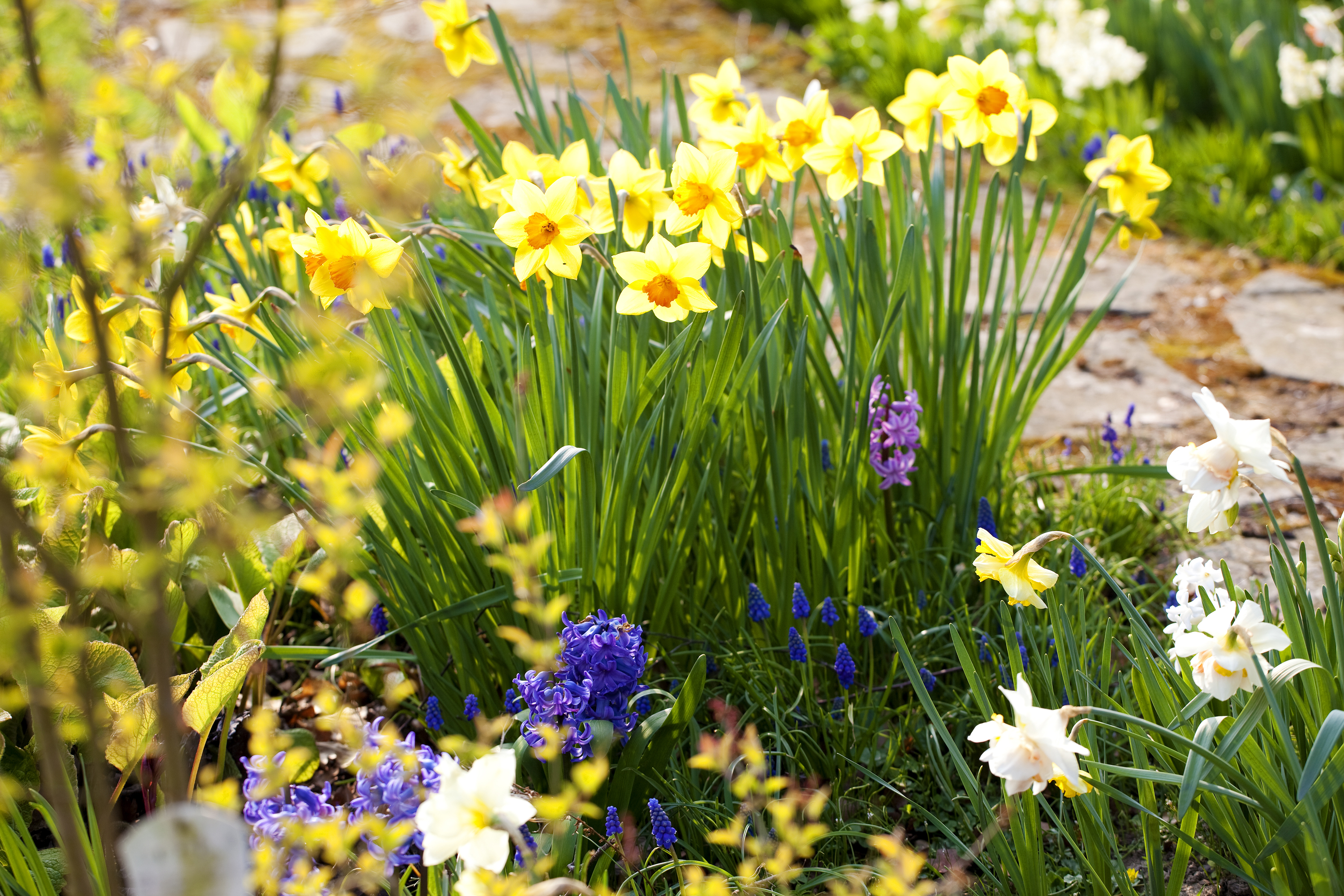Planting bulbs in autumn – with expert tips from Alan Titchmarsh
Want a brilliant show of spring colour? Discover how planting bulbs in autumn will give your garden life year after year


Planting bulbs in autumn is a surefire way to ensure that you'll see spring flowers burst to life next year – which is always welcome after a long winter.
One of the most naturally colourful and fragrant garden additions, knowing precisely how and when to start planting flower bulbs such as daffodils and crocuses is key, and it does need a little forward planning.
Naturalised bulbs will come up year after year and are one of the most naturally decorative garden ideas around, for bursts of colour. We are delighted that one of our favourite UK gardeners and broadcasters, Alan Titchmarsh, shared his advice on naturalising bulbs. So just scroll down for Alan’s expert tips on getting your bulbs in the ground in autumn.
1. Spring bulbs to plant now

Alan suggests planting bulbs in autumn like daffodils, crocuses and narcissi – as they are all ideal for naturalising. You needn’t stick to these (although we’d definitely want to include them for the best show of spring colour).
Which other flowers might you also want to brighten your spring garden with? Tulips are a welcome spring sight, as are snowdrops. Cyclamen are also perfect for naturalising under trees. And don’t miss out on bluebells which will create a carpet of glorious colour.
Use our guide to how to plant daffodil bulbs to find out more.
2. Dig down
How deep should you plant bulbs? That’s easy with Alan’s rule of thumb. They should go at three times their own depth. Crocuses have relatively small bulbs, so you won’t need to go down far with them, but daffodil bulbs are rather more sizeable customers, so be prepared to dig right down to put these in.
Get small space home decor ideas, celeb inspiration, DIY tips and more, straight to your inbox!
You’ll likely be planting bulbs in grass to create a natural look, so Alan suggests getting yourself a bulb planter to help with the task. It’ll ensure creating the holes for your bulbs is quicker and easier.
3. Swerve a formal look
To avoid growing daffodils that look formal – or like soldiers, as Alan says – he advises planting them in groups about 7.5 to 8cm apart. But how do you create a group that looks like you didn’t actually make it? It’s easy with Alan’s method. Just grab the bulbs, throw them on to the ground, and plant as they fall.
4. Make crocus planting simple
Alan has a neat trick when it comes to getting crocuses to appear across your lawn when spring arrives. You’ll need to cut into a section of turf with a spade, then gently lift the grass away from the soil below.
Next, make little holes and plant a group of crocus bulbs. You can aim for around six or 12 together, around 4cm apart, Alan says. Then move the soil back over the bulbs, lightly firming it above them. All you need to do then is roll the turf back on top, and await your spring flowers appearing through the lawn.
5. Hold back on the mowing
This isn’t a to-do now task, but you should make note of it if you want the bulbs you’ve put in this autumn to keep flowering year after year. You can’t cut the leaves of your plants as soon as the flowers are gone, Alan advises, so when you mow the lawn, you’ll have to go round them for six weeks after flowering.
Yes, that does mean you will have to put up with a bit of messiness, but we think you’ll agree that it’s worth it for the spring spectacle. And if you really think you have a low tolerance threshold for an untidy lawn even if the situation’s only temporary, take on board Alan’s reminder that crocuses have shorter foliage that won’t look quite so messy.
- Best lawn mower 2020: the 8 top buys for professional-looking lawns
Check out Alan Titchmarsh’s advice on naturalising bulbs

Sarah is a freelance journalist and editor writing for websites, national newspapers, and magazines. She’s spent most of her journalistic career specialising in homes – long enough to see fridges become smart, decorating fashions embrace both minimalism and maximalism, and interiors that blur the indoor/outdoor link become a must-have. She loves testing the latest home appliances, revealing the trends in furnishings and fittings for every room, and investigating the benefits, costs and practicalities of home improvement. It's no big surprise that she likes to put what she writes about into practice, and is a serial house revamper. For Realhomes.com, Sarah reviews coffee machines and vacuum cleaners, taking them through their paces at home to give us an honest, real life review and comparison of every model.